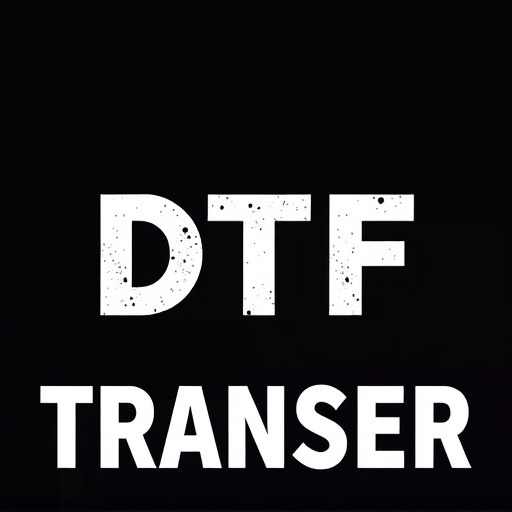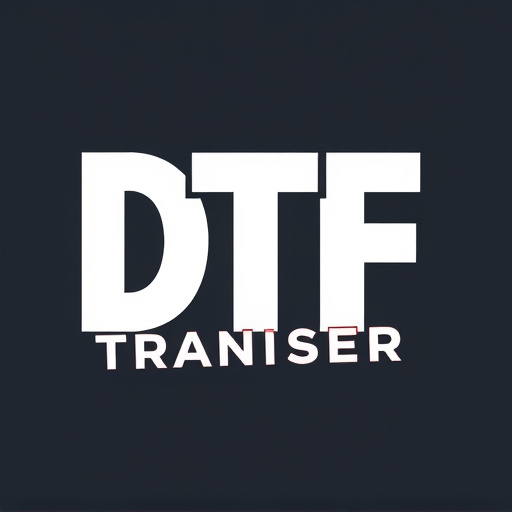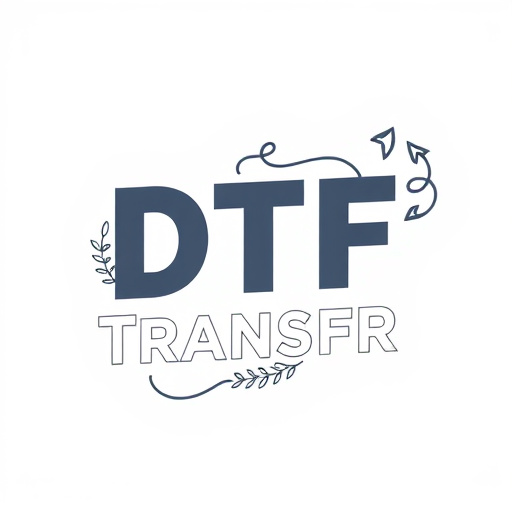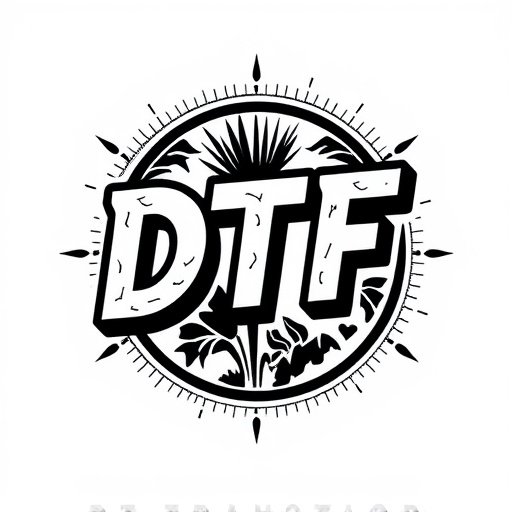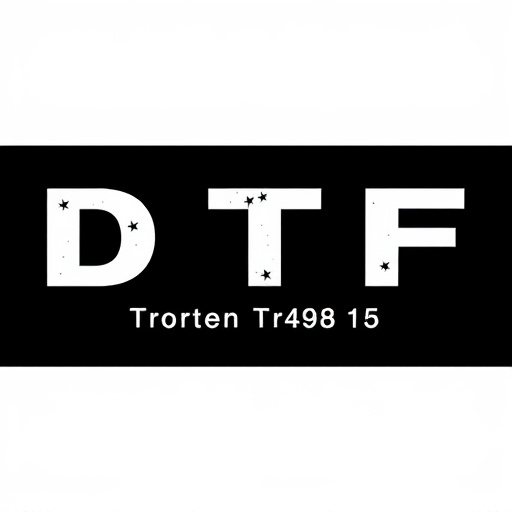Direct-to-Film (DTF) transfer is a cutting-edge printing technology that offers unparalleled clarity and durability for designs on diverse surfaces. With growing demand in fashion and promotional products, especially from small to medium businesses seeking custom prints without high MOQs, DTF presents a game-changing opportunity. Setting up a DTF transfer company involves understanding regulations, obtaining licenses, and strategically choosing a location. Investing in top-tier DTF equipment and materials ensures vibrant, durable prints for various applications. Success hinges on strong online marketing, partnerships, quality control, and exceptional customer service to stand out in a competitive market.
Establishing a direct-to-film (DTF) transfer company offers a unique opportunity to capitalize on the growing demand for custom printing solutions. This comprehensive guide navigates the process from understanding DTF transfer techniques and their advantages to setting up your business, choosing the right equipment, and marketing your services effectively. Learn how to cater to specific target audiences, maintain quality control, and deliver exceptional customer experiences in the competitive DTF printing landscape.
- Understanding Direct-to-Film (DTF) Transfer: A Comprehensive Overview
- Market Analysis and Target Audience for DTF Transfer Services
- Setting Up Your Business: Legalities, Licenses, and Location Considerations
- Equipment and Technology: Choosing the Right Printers and Materials for Quality DTF Prints
- Marketing Strategies to Promote Your DTF Transfer Company
- Best Practices for Customer Service and Quality Control in DTF Printing
Understanding Direct-to-Film (DTF) Transfer: A Comprehensive Overview

Direct-to-Film (DTF) transfer is a cutting-edge printing process that has revolutionized the way we reproduce images and designs onto various surfaces. Unlike traditional printing methods, DTF involves directly applying ink to a film or substrate, which then transfers the image to a final medium like clothing, paper, or even metal. This innovative technique offers unparalleled clarity, vibrancy, and durability in prints, making it highly sought after in industries ranging from fashion and textiles to signage and promotional products.
At its core, DTF transfer leverages advanced inkjet printing technology to precisely deposit pigment onto a lightweight, heat-active film. Once the design is printed on the film, it can be seamlessly transferred to a wide array of materials through heat pressing or other specialized techniques. This process not only ensures precise color reproduction but also allows for complex designs and intricate details to be achieved with ease. Moreover, DTF prints are known for their fast drying times and exceptional resistance to fading, making them ideal for both indoor and outdoor applications.
Market Analysis and Target Audience for DTF Transfer Services

In today’s digital age, the demand for direct-to-film (DTF) transfer services is experiencing a significant surge across various industries. This trend is driven by the need for high-quality, on-demand printing solutions, particularly in sectors like fashion, merchandising, and promotional products. Market analysis reveals a gap in the industry where specialized DTF transfer companies can excel. The target audience for these services encompasses small to medium-sized businesses (SMBs) looking for efficient, cost-effective ways to produce custom designs on various fabrics without large minimum order quantities.
By catering to SMBs, DTF transfer companies offer an attractive alternative to traditional printing methods. These businesses often require small batches of personalized items for marketing campaigns, pop-up events, or limited-edition collections. DTF Printing provides a versatile and adaptable solution, enabling entrepreneurs to swiftly bring their creative ideas to life. The target market’s preference for unique, customizable products presents a lucrative opportunity for DTF transfer services, promising to revolutionize the way businesses approach product personalization.
Setting Up Your Business: Legalities, Licenses, and Location Considerations
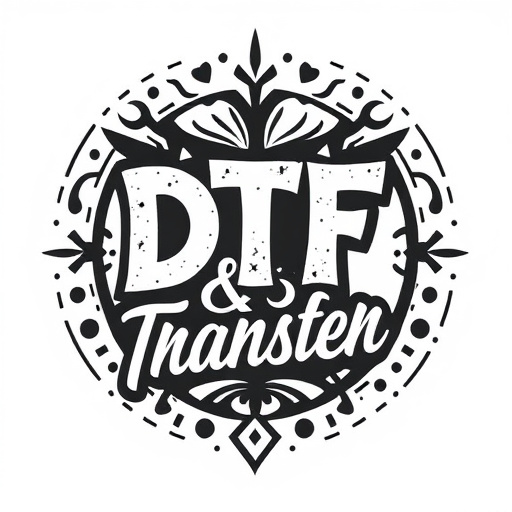
Setting up a direct-to-film (DTF) transfer company involves navigating several key considerations to ensure a solid legal and logistical foundation. The first step is understanding the industry regulations and obtaining the necessary licenses to operate. This includes registering your business, acquiring permits for handling and transferring films, and potentially seeking special certifications for specific types of DTF printing processes. Local laws and zoning regulations should also be thoroughly reviewed, as they can impact your chosen location’s suitability for a film transfer business.
Location is critical for a DTF company. An ideal spot offers easy access for clients to drop off and pick up their films, ample space for necessary equipment and storage, and reliable power and internet connections for smooth operations. Proximity to film enthusiasts, archival facilities, or other media-related businesses can also enhance your client base and resource accessibility. Therefore, a strategic location decision is pivotal for the success of your DTF transfer venture.
Equipment and Technology: Choosing the Right Printers and Materials for Quality DTF Prints

When establishing a direct-to-film (DTF) transfer company, investing in high-quality equipment and technology is paramount for achieving exceptional DTF prints. The right printers and materials form the backbone of your operations, ensuring the vibrancy and durability of each design transferred to various substrates. Opt for state-of-the-art DTF printers capable of handling a wide range of materials, from vinyl to fabric. These machines should offer precise color accuracy, crisp detail reproduction, and efficient drying times to minimize waste.
Choosing the appropriate print media is equally crucial. Select materials that align with your intended applications, whether it’s automotive wraps, garment printing, or signage. High-quality DTF films and inks are designed to withstand outdoor exposure, maintain vivid colors, and provide a smooth finish. Always consider factors like adhesive strength, flexibility, and UV resistance to guarantee long-lasting results. By prioritizing top-tier equipment and materials, your DTF transfer company will deliver outstanding prints that cater to diverse customer needs.
Marketing Strategies to Promote Your DTF Transfer Company
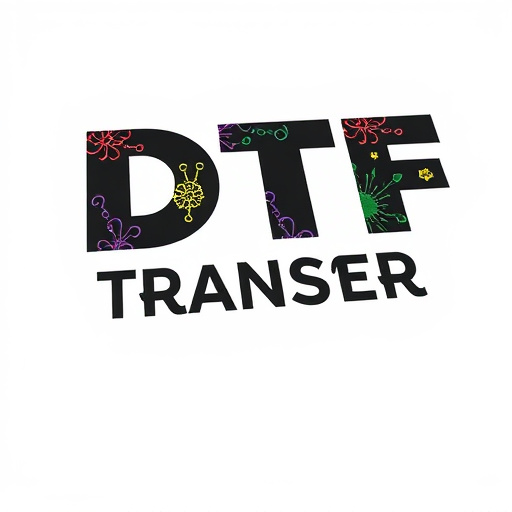
To establish your direct-to-film (DTF) transfer company and stand out in a competitive market, implementing effective marketing strategies is key. Start by creating a strong online presence through a user-friendly website that showcases your DTF printing services, high-quality prints, and unique selling points. Utilize search engine optimization (SEO) techniques to rank higher for keywords like “DTF Transfer” and “DTF Printing.” Engage potential customers on social media platforms with visually appealing content featuring your vibrant DTF prints. Consider influencer collaborations and user-generated content to build trust and expand your reach.
Additionally, partner with local businesses or events that align with your target audience. Offer exclusive discounts or promotions to attract new clients. Word-of-mouth marketing is powerful; ensure satisfied customers become advocates by providing excellent service and high-quality DTF prints. Build an email list to send targeted newsletters highlighting special offers, industry trends, and tips related to DTF transfer, fostering a sense of community around your brand.
Best Practices for Customer Service and Quality Control in DTF Printing
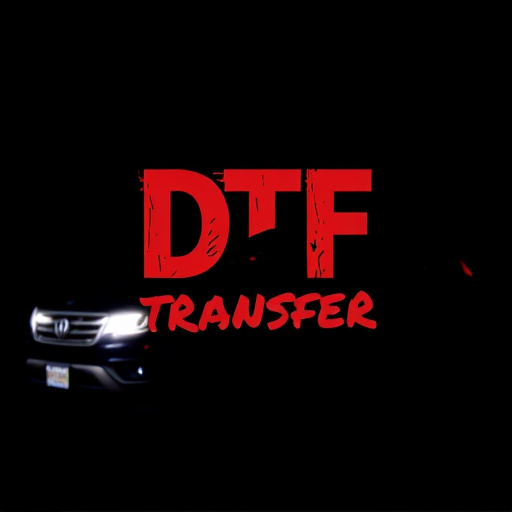
When establishing a direct-to-film (DTF) transfer company, prioritizing excellent customer service and robust quality control is paramount to your success. Implement clear communication channels where clients can easily reach out with inquiries or issues. Provide detailed information about DTF printing processes, materials, and turnaround times to set realistic expectations. Offer customization options while ensuring the unique design requirements of each client are accurately interpreted for optimal print outcomes.
Quality control involves meticulous inspection at every stage of production. Calibrate your equipment regularly to maintain accuracy in color reproduction and print quality. Establish standard operating procedures for film preparation, exposure, and development to minimize defects. Conduct random samples checks throughout the production line to identify and rectify any inconsistencies promptly. Regular training for staff on DTF printing best practices will contribute to a consistent level of excellence in every DTF print produced.









